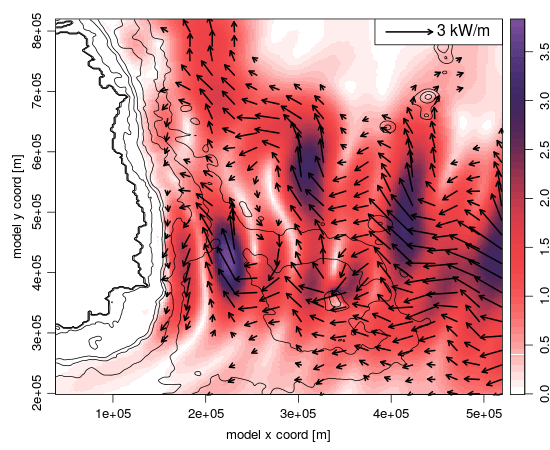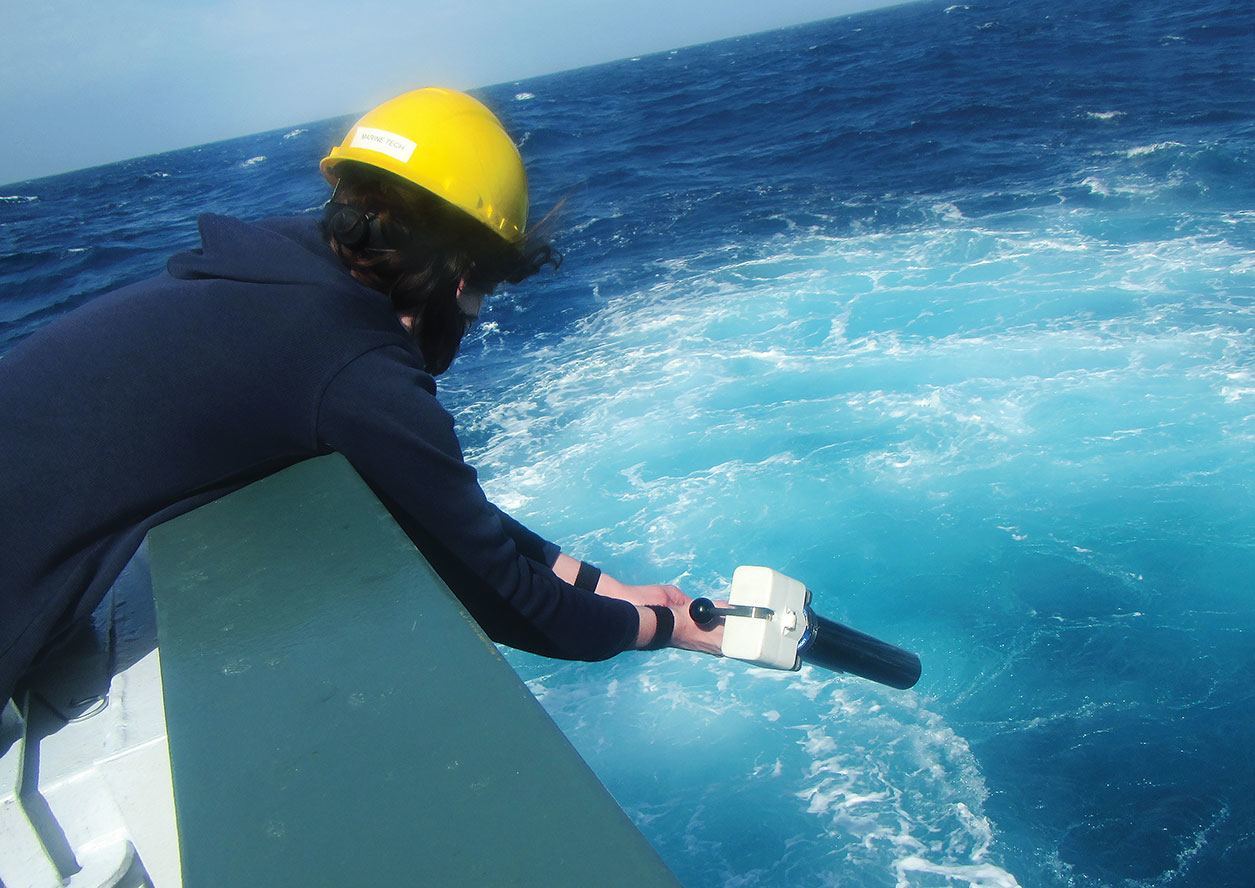Collaborating Institutions
In a joint ship operation between Falkor and Scripps Institution of Oceanography’s Roger Revelle, collaborators from U.S. and Australian institutions ran the first comprehensive study of the largest and most focused internal tide on the planet. The tidal beam (T-Beam), which moves across the Tasman Sea, was the center of a study co-lead by Drs. Amy Waterhouse, at the Scripps Institution of Oceanography, and Samuel Kelly, from the University of Minnesota Duluth. The overall research goal was to quantify the velocity of water movement and density at all depths to discern the movement and speed of the internal tide.
The Tasman Sea internal tide is the only one known in the world that moves almost completely in one direction. It forms at a ridge south of New Zealand then moves west toward Tasmania, where it reflects and breaks on the continental shelf. Prior to this project, researchers had little data on the internal tide because the area is remote, and weather conditions there can be treacherous. During this coordinated cruise the research teams aboard the two ships amassed water column current data to improve general understanding of the phenomenon, as well as researchers’ ability to incorporate internal tide effects accurately in climate models. “The evolution of the internal tide in the Tasman Sea is a process that we need to understand in order to broaden our ability to predict the future ocean and climate, and with these small steps, such as the T-TIDE experiment, we are making that progress” said Amy Waterhouse.
The science teams aboard the Revelle and Falkor were able to find the beam of the internal tidal energy and even locate the crests of the internal waves on the continental slope and shelf. The team conducted a set of nine 25-30 hour CTD profiling stations along two parallel lines spanning the internal tide beam. Combining this information with current sensors called Acoustic Doppler Current Profilers (ADCPs) and minute temperature sensors called chi-pods, allowed the research team an unprecedented opportunity to study the entire evolution of the tidal beam.
The evolution of the internal tide in the Tasman Sea is a process that we need to understand in order to broaden our ability to predict the future ocean and climate, and with these small steps, such as the T-TIDE experiment, we are making that progress.
— Amy Waterhouse


This project was the first to utilize the cloud-based high-performance computer aboard Falkor to analyze the enormous amount of data as it was received, allowing the scientists to optimize their sampling plan while underway. On board Falkor, scientists utilized the computer to run numerical simulations using the MITgcm, a general circulation model created by MIT, to establish updated projections of the tidal beam’s pathway. The high-performance computing system offered processing power at a level that researchers would normally only have access to on land. By processing the information during the cruise, the team evolved their predictions of the direction of the waveform based on the new collected data and obtained insights into the true beam pathway.
In addition, the team studied the effects that the tidal beam has on the distribution of chemical nutrients and phytoplankton, specifically looking at the amount of nutrients that were brought to the ocean surface by the internal tide. This information will help scientists better understand what impact the tide has on the plankton population.
Ultimately, both teams combined their datasets to help further refine the area models that will help researchers better understand the Tasman region and further inform development of local environmental management practices. This information will also help improve modeling of complex internal tidal dynamics and will contribute to better understanding the shifts in the global climate.




